
THE main battlefields in the Somme region of northern France are a place where, just over 100 years ago during World War I, thousands of young ANZACs arrived following the battles at Gallipoli to play a key part in the war on the Western Front.
As a youth growing up and learning about these battles at school, I always wanted to visit this area and experience what so many young men endured during the Great War. So, while planning a trip to Europe in the Landy, I decided to take in the Somme region in the north of France and tackle some of the off-road tracks that zigzag their way to the historic Somme battlefields.
THE BATTLE OF ALL BATTLES
IN THE early morning of July 1, 1916, more than 100,000 British infantrymen were ordered by the British Generals from their trenches north of the Somme River in France to attack the Germans. The Germans were embedded in trenches stretching 30km, just a stone’s throw away from the British.
The Germans had built an impregnable and sophisticated wall of barbed wire between the trenches, with powerful machineguns strategically perched in view of the space between both lines. The Germans annihilated the British charge, which resulted in almost 60,000 casualties, a third of whom died, making it one of the biggest losses during one day inflicted on any army in the history of modern warfare.
 Despite the enormous losses inflicted on the first day of the Battle of the Somme, the offensive continued. The Australian Imperial Force, consisting of fresh volunteers and men who had fought at Gallipoli, arrived at the Somme battleground to assist in the offensive.
Despite the enormous losses inflicted on the first day of the Battle of the Somme, the offensive continued. The Australian Imperial Force, consisting of fresh volunteers and men who had fought at Gallipoli, arrived at the Somme battleground to assist in the offensive.
Throughout this campaign, which stretched from 1916-18, the Australian divisions suffered 24,000 casualties, including more than 6700 deaths. Official war correspondent C.E.W. Bean described parts of the Somme as, “more densely sown with Australian sacrifice than any other place on earth”.
CODENAME: TANK
The name ‘tank’ was initially a secret code used by the British to maintain secrecy and disguise its true purpose. This vehicle was developed in 1915 to break the stalemate of trench warfare.
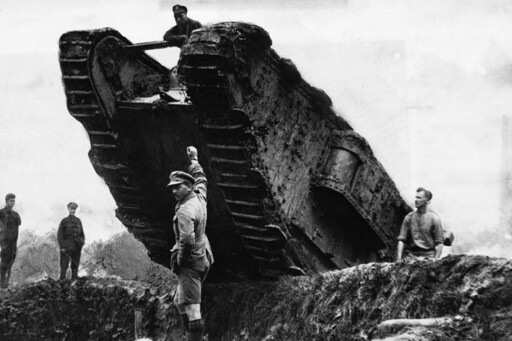 The Mark 1 had a 105hp six-cylinder engine and its main benefits included surviving the machinegun and small-arms fire in no man’s land, being able to travel over the muddy terrain, and driving over barbed wire and crossing the gaps between enemy trenches. It was also used to carry supplies and troops through difficult terrain.
The Mark 1 had a 105hp six-cylinder engine and its main benefits included surviving the machinegun and small-arms fire in no man’s land, being able to travel over the muddy terrain, and driving over barbed wire and crossing the gaps between enemy trenches. It was also used to carry supplies and troops through difficult terrain.
TREKKING THE BATTLEFIELDS
DRIVING on the 4WD tracks through this region is a very humbling experience, as you pass graveyard after graveyard with distinctive white and dark grey crosses that dominate the landscape. Many of the inscriptions carved on the crosses read: “A soldier of the Great War known unto God”, and there are huge memorials built in memory of various allied countries that fought in the many battles in the region.
It’s currently a very popular place for visitors from all over the world, given these battles are in their centenary year. Bus tours of this region are great, but having a 4WD or taking part in a 4WD tour allows you to experience and absorb this landscape as you drive from battlefield to battlefield along narrow dirt tracks that take you right into the heart of this historic region.
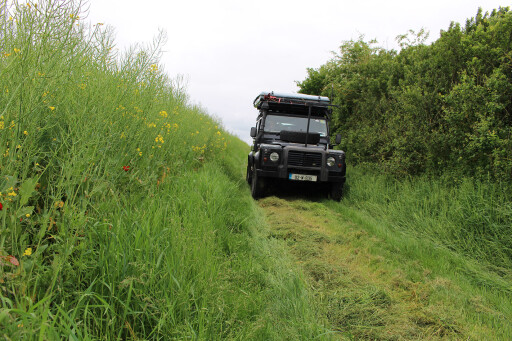 You can’t help but imagine what it was like for the first ANZACs who arrived here in the summers of 1916-18. They would have been transported by horses, as well as by large trucks like the B-type British buses that were converted into military transport vehicles and used to shift troops along the muddy tracks to the trenches on the front line.
You can’t help but imagine what it was like for the first ANZACs who arrived here in the summers of 1916-18. They would have been transported by horses, as well as by large trucks like the B-type British buses that were converted into military transport vehicles and used to shift troops along the muddy tracks to the trenches on the front line.
Another vehicle that was used to negotiate these challenging tracks was the Lanchester armoured car built by Rolls-Royce. This beast supported a six-cylinder, 60hp petrol engine and, despite its rugged appearance, the poor track conditions often proved too much of a challenge for the 4x2 Lanchester, as its low chassis limited its usefulness in the field.
 Probably the most recognisable vehicle that negotiated this muddy landscape during the Battle of the Somme was the British-made Mark 1 tank, the world’s first tank that took part in combat. As I steered my Land Rover through the region’s numerous tracks that dissected and zigzagged this historic landscape, the weather took a turn for the worse and the tracks started to get very muddy and slippery.
Probably the most recognisable vehicle that negotiated this muddy landscape during the Battle of the Somme was the British-made Mark 1 tank, the world’s first tank that took part in combat. As I steered my Land Rover through the region’s numerous tracks that dissected and zigzagged this historic landscape, the weather took a turn for the worse and the tracks started to get very muddy and slippery.
Having been slowed down considerably and stuck on one occasion, it soon came to light what the conditions would have been like for the men and the vehicles that occupied this region all those years ago. The mud in the Somme is very slippery and heavy; very different to anything I’ve ever experienced.
During the battle of the Somme, the land was devastated by the constant bombardment of bombs, leading to it becoming waterlogged and resulting in very unpleasant conditions for those negotiating the challenging environment.
EVER-PRESENT DANGER
When 4WDing in this region, ensure you stick to the designated tracks. It may be more than 100 years since the Battle of the Somme, but its dangers are still very real, with millions of unexploded munitions remaining buried under the topsoil throughout the region.
The French and Belgian authorities and military are still cleaning up and discovering tonnes of bombs every year. In 2004, for example, 3000 German artillery shells were found at a single site in Dadizele, east of Ypres. The large volumes found aren’t that surprising considering that between 1914 and 1918 both armies fired millions of shells at each other, some filled with toxic gases.
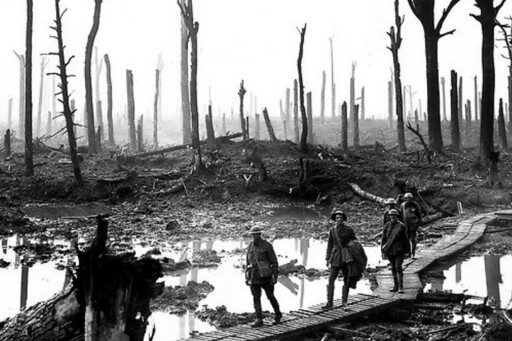 So it’s well-advised to stick to the established tracks or to take a tour with an established 4x4 touring company, like Battlefields by 4x4. As I meandered my way through the now very muddy 4WD tracks, I eventually arrived at the memorial of the Third Australian Division.
So it’s well-advised to stick to the established tracks or to take a tour with an established 4x4 touring company, like Battlefields by 4x4. As I meandered my way through the now very muddy 4WD tracks, I eventually arrived at the memorial of the Third Australian Division.
On the high country above the village Sailly-le-Sec, at the intersection of the D1 and the road that climbs northwards out of the village, stands this impressive Australian Memorial. The Third Australian Division fought its first major battle here in June 1917 during the Battle of Messines, as well as numerous other battles along the Western Front.
These Australian troops arrived at this very location with the mission to occupy an old French line of defence between the villages of Mericourt L’Abbé and Sailly-le-Sec and take over from the tired British troops. Upon arriving more than 100 years ago, the Australians were received with a very warm welcome from the French villagers who were very relieved to see them.
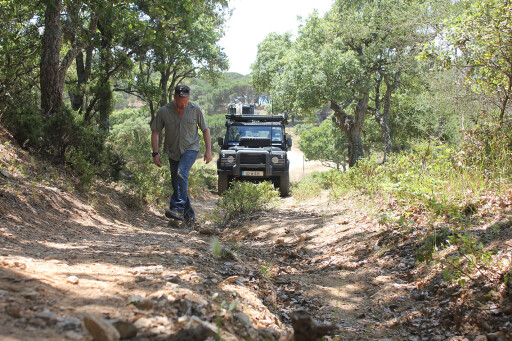 After a long day touring the off-road track, I set up camp at the Les Puits Tournants campsite right beside the village of Sailly-le-Sac and found myself imagining how active this small village would have been more than one hundred years ago, with the sounds of big engines, Australian accents and the deafening bombardment of artillery fire in the distance as the Australian Third Division set up camp surrounding this quaint French village.
After a long day touring the off-road track, I set up camp at the Les Puits Tournants campsite right beside the village of Sailly-le-Sac and found myself imagining how active this small village would have been more than one hundred years ago, with the sounds of big engines, Australian accents and the deafening bombardment of artillery fire in the distance as the Australian Third Division set up camp surrounding this quaint French village.
I found the perfect pitch beside a small creek and then opened the roof-top tent and lit the billy and portable fire pit to start preparations for dinner, before having a look at the map to plan the tracks and sites to be visited the following day.
TOUR GUIDE
THERE are a number of options on how best to visit these sites, with various services to the battlefields including bus tours and tailor-made 4WD tours. The main 4WD touring service, as mentioned, is called Battlefields by 4x4, which offers 4WD-guided tours designed to enable small groups to visit battlefields, iconic cemeteries and memorials, and access some of the European battlefields of the first and second World Wars.
The tours provide unique and informative commentary over CB radio from experienced battlefield guides. Carl Liversage, one of the directors and guides, told me that one of the touring 4WDs used by Battlefield by 4x4 is a TB48 Nissan Patrol that started its life in Australia before being shipped to the UK and then making its way to the north of France.
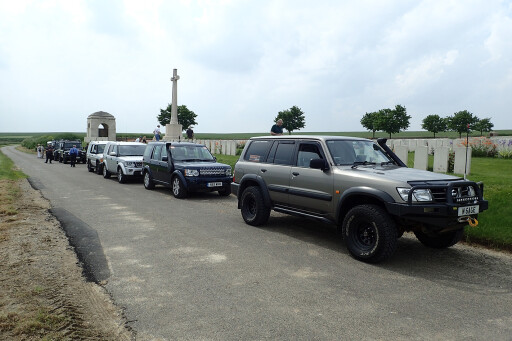 Carl said it’s one of Battlefield by 4x4’s best-equipped 4WDs, boasting a TJM winch bumper, winch, snorkel, 285/75 16 tyres on steel wheels, custom rock sliders, stainless steel exhaust, snorkel, LED light bar and rear-mounted LEDs, custom sound system, remote alarm with remote engine start, and various other bits and bobs.
Carl said it’s one of Battlefield by 4x4’s best-equipped 4WDs, boasting a TJM winch bumper, winch, snorkel, 285/75 16 tyres on steel wheels, custom rock sliders, stainless steel exhaust, snorkel, LED light bar and rear-mounted LEDs, custom sound system, remote alarm with remote engine start, and various other bits and bobs.
Carl told me that when it first arrived for touring duties with Battlefield by 4x4, it was very expensive to run with fuel prices much higher than those in Australia. It was eventually decided to do an LPG conversion and, as a result, it’s now much more affordable to run and is very much at home taking people to the sites and battlefields.
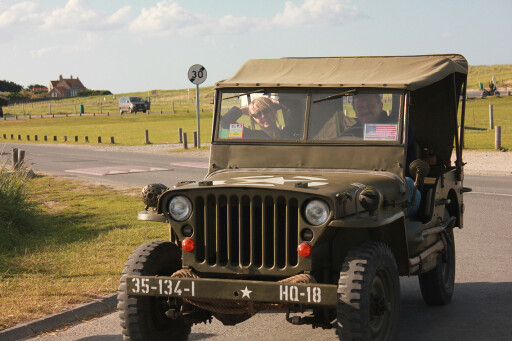 Unlike the images in history books, the landscape of Northern France and Belgium is filled with fields of bright yellows, greens and distinctive red poppies. During the Great War, the colour would have been predominantly brown, grey and dominated by mud and bomb craters.
Unlike the images in history books, the landscape of Northern France and Belgium is filled with fields of bright yellows, greens and distinctive red poppies. During the Great War, the colour would have been predominantly brown, grey and dominated by mud and bomb craters.
However, driving through this region in a 4WD and witnessing the battlefield’s large grassed-over craters and trenches, and the magnificent memorials that honour the 295,000 Australians who served in this theatre of war, brings this place to life.
TOURING IN FRANCE
FRANCE possesses a wide variety of dirt tracks that meander through very diverse landscapes: from coastal plains in the north and west to the mountain ranges of the Alps in the south-east, and from the remote Massif Central in the south-central to the Pyrenees in the south-west.
 Finding a network of dirt tracks in France requires research, and when located you need to know if you’re allowed to drive on them. Generally, you’re allowed to use an existing public lane, though look out for signs that read ‘propriété privée’ which means ‘private property’. In France, the same rules apply to driving on greenlanes as in the UK and many other European countries: drive slowly and in small groups, and keep litter in your car.
Finding a network of dirt tracks in France requires research, and when located you need to know if you’re allowed to drive on them. Generally, you’re allowed to use an existing public lane, though look out for signs that read ‘propriété privée’ which means ‘private property’. In France, the same rules apply to driving on greenlanes as in the UK and many other European countries: drive slowly and in small groups, and keep litter in your car.
The tracks are mostly in good condition but can be dusty and rough in spots, particularly in mountainous areas. By booking a tour with companies like Battlefields by 4x4, you won’t have to worry about tracks to take as it’ll tailor the tour to suit your areas of interest.
More infomation: greatwar.co.uk/places/somme-camping.htm
BATTLEFIELD BY 4X4
BATTLEFIELD by 4x4 tours cover all of the key Australian sites of interest, including Pozieres and Mouquet Farm, as well as the key ANZAC memorials/battlegrounds embedded into the landscape.
As of 2017, Battlefield by 4x4 now covers the southern area of the Somme, which includes additional Australian sites such as Le Hamel and the Australian National Memorial at Villers-Bretonneux. In 2018, this area will also host a state-of-the-art ‘John Monash’ visitor centre.
TRAVEL PLANNER
DRIVING TIPS
THERE are some compulsory items for driving in France. By law, a self-test breathalyser is required onboard, plus a reflective jacket and warning triangle. Remember, you will be driving on the right-hand side of the road.
CAMPING
FRANCE has a well-earned reputation when it comes to campsites, with a huge variety on offer. However, unlike Australia, it’s limited when it comes to remote camping. In the Somme region are a number of campsites offering a variety of touring pitches close to the Somme battlefields and the River Somme. The Les Puits Tournants campsite is located close to the Australian Memorial. For more infomation: camping-puitstournants.com
GETTING THERE
IF YOU have flown in from Australia and are using the UK as a base, the Channel Tunnel is the quickest but not the cheapest way to get to France. It is advisable to always book in advance.
BEST TIME TO TRAVEL
THE best time to travel to France is between April and October. July and August tend to be busy months, so if you’re not restricted to travelling then, you’ll avoid peak season traffic. It’s also much more affordable to travel in April, May and early June.
MAPS AND GUIDES
GOOD dirt tracks maps include the Memory-Map’s (IGN) 1:25000. These clearly identify tracks. If you join Codever you will be sent a useful booklet explaining where you can legally travel. Other maps include the IGN bleu carte de randonnee 1:25000. These cover everything down to narrow pathways, barns, rivers and springs, and every part of France.

COMMENTS